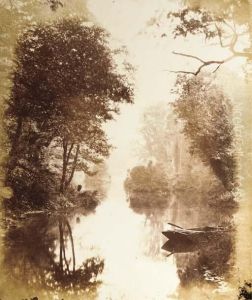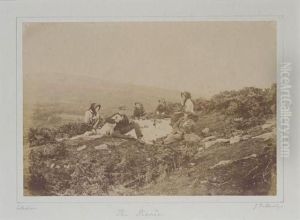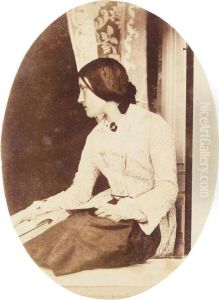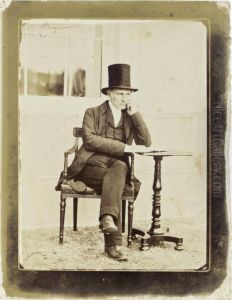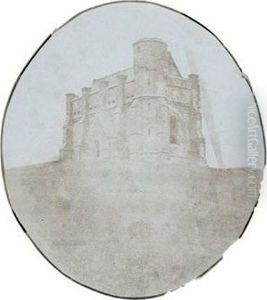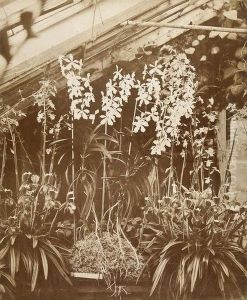John Dillwyn Llewellyn Paintings
John Dillwyn Llewellyn was a Welsh botanist, pioneer in photography, and an innovator in the field of horticulture. Born on January 12, 1810, in Swansea, Wales, Llewellyn was part of a wealthy family that had significant influence on the cultural and scientific pursuits in the region. His interest in natural sciences was cultivated from a young age, leading him to become an active member of the Royal Institution of South Wales.
Throughout his life, Llewellyn maintained a keen interest in both botany and horticulture, which was evident in his estate at Penllergare Valley Woods, where he created a picturesque landscape filled with a variety of exotic plants. His contributions to botany were significant, but it is his work in photography for which he is most renowned. He was introduced to photography by his friend and fellow scientist, Sir William Henry Fox Talbot, who was a pioneer of the photographic process.
Llewellyn quickly became a proficient photographer, experimenting with various techniques and processes throughout the 1840s and 1850s. He was one of the first to use the calotype process, which allowed for multiple prints to be made from a single negative. His photographic subjects ranged from family and friends to landscapes and botanical specimens, and his work contributed to the development of early photographic technology and techniques.
He was particularly noted for his early adoption of stereo photography and his experiments with color photography, long before it became commercially viable. Llewellyn's work in photography was often conducted in collaboration with his daughter, Thereza, who was also an accomplished photographer. Together, they produced a body of work that is not only of historical importance but is also celebrated for its artistic quality.
John Dillwyn Llewellyn passed away on August 24, 1882. Although he was not as widely known as some of his contemporaries during his lifetime, his contributions to photography have been increasingly recognized and appreciated in the years following his death. His photographs are considered important in the history of photography, and they offer a unique glimpse into the Victorian era and its aesthetic sensibilities.
